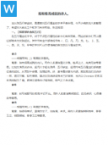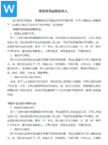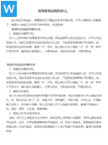













Case 0: 1. "Switch case 0 is used to represent the default behavior."2. "If a case value matches the value being tested, that case's code is executed."3. "If no case value matches the value being tested, the switch statement will execute the code for case 0."4. "Case 0 can be used to catch any unexpected input values."5. "Case 0 is often used along with other case values to handle different scenarios."6. "Switch statements are a useful way to handle multiple conditions in a program."7. "It's important to enclose case values in curly braces {}."8. "Using case 0 can help prevent errors and make code more readable."9. "Case 0 can also be used as a placeholder or catch-all value."10. "If case 0 is used, it should be listed after all other case values."11. "In some programming languages, case 0 is not required and can be omitted."12. "If case 0 is included, it should be the last case value in the switch statement."13. "Case 0 can be used to initialize variables in a switch statement."14. "Using case 0 with fallthrough can result in unexpected behavior."15. "In a case 0 statement, the break keyword is not necessary."16. "Using case 0 can help make code more concise and easier to understand."17. "If the value being tested is not included in any case statement, case 0 will be executed."18. "Switch statements with case 0 are a common feature in many programming languages."19. "Case 0 can be used to handle values that are not known at compile-time.
Case 0: 1. In a default case statement, case 0 is used to represent the behavior that will execute if none of the other case values match the value being tested. This code block is often used to handle any unexpected input values or provide a fallback behavior. 2. If a value being tested matches one of the case values, the code block associated with that case will execute. This allows for multiple conditions to be handled in a single case statement. 3. If no case value matches the value being tested, the switch statement will execute the code for case 0. This is important to ensure that all possible input values are handled, even if they are not explicitly defined in the switch statement. 4. Case 0 can be used to catch any unexpected input values. By providing a default behavior for case 0, the program can gracefully handle values that were not intended or anticipated by the programmer. 5. Case 0 can be used alone or in combination with other case values to handle different scenarios. By defining multiple case blocks, the programmer can provide specific behavior for different inputs or conditions.Switch statements are a useful way to handle multiple conditions in a program: 6. It's important to enclose case values in curly braces {}. This helps to clearly define the range of values that will match each case and ensures that the switch statement is properly formatted. 7. Using case 0 can help prevent errors and make code more readable. By providing a default behavior for case 0, the programmer can ensure that all possible input values are handled and reduce the likelihood of runtime errors. 8. Case 0 can also be used as a placeholder or catch-all value. This allows the programmer to provide a default behavior for any input values that are not explicitly defined in the switch statement. 9. If case 0 is used, it should be listed after all other case values. This ensures that the default behavior will only execute if none of the other case values match the input value. 10. In some programming languages, case 0 is not required and can be omitted. However, it is generally considered good practice to include a default case in the switch statement to handle unexpected input values. 11. If case 0 is included, it should be the last case value in the switch statement. This ensures that the default behavior will only execute if none of the other case values match the input value. 12. Case 0 can be used to initialize variables in a switch statement. By assigning a value to a variable in the case 0 block, the programmer can provide a default value for the variable in case it is not explicitly initialized elsewhere in the code. 13. Using case 0 with fallthrough can result in unexpected behavior. Fallthrough allows the program to execute the code associated with the previous case after the current case has been processed. If fallthrough is used with case 0, it can cause the program to ignore subsequent case values and execute the code for case 0 multiple times. 14. In a case 0 statement, the break keyword is not necessary. The break keyword is used to exit the switch statement after a specific case has been processed. Since case 0 will always execute, the break keyword is not necessary in this case. 15. Using case 0 can help make code more concise and easier to understand. By providing a default behavior for case 0, the programmer can eliminate the need for multiple if-else statements and make the code easier to read and maintain.

服务行业与人们的生活息息相关,因此,它涉及到的“经典的话”可以从多个角度进行归纳,比如专业性、顾客至上、团队合作、持续改进等方面。以下是一些关于服务行业的经典表述: 1. **专业性与技能**: - “专业知识和服务技能是服务行业的生...

教书育人是教育事业的核心,历代教育家和智者都留下了许多经典的名句,鼓励教师和学生追求知识与道德的双重成长。以下是一些关于教书育人的经典名句,它们体现了教育的深刻内涵: 1. **孔子**:“学而时习之,不亦说乎?”——强调学习的持续性和乐趣...

每天一句励志语录,能够激励我们不断前行,面对生活和工作中的挑战。下面是一些精选的励志语录,希望能为您的每一天注入正能量: 1. **成功不会主动找到你,你必须去找成功。** 2. **你的梦想,不需要别人知道,只要自己勇敢追求。** 3. ...

关于友爱的名言,是人类智慧的结晶,展现了人们对于友情、互助和团结的理解与颂扬。这里列举了一些著名的关于友爱的名言,希望能启发和激励你: 1. **亚里士多德**:“朋友是一面镜子,通过他们,我们能够看到自己的优点和缺点。” 2. **西塞罗...

歌颂友谊的名言是赞美友谊这一美好情感的精华表达,它们体现了人类对友谊深刻的理解和珍视。以下是一些著名的关于友谊的名言,它们从不同的角度描绘了友谊的真谛: 1. "真正的友谊能经得起风雨,正如夏雨中盛开的玫瑰,美丽且坚韧。" - 张爱玲 2....

赞美老师的名言警句是表达对教师辛勤工作、智慧和影响力的崇敬和感激之情。这些名言不仅体现了社会对教育工作者的尊重,也激励着人们珍惜教育机会,感恩那些指引我们成长的灵魂导师。以下是一些经典的赞美老师的名言警句: 1. “师者,所以传道授业解惑也...
Copyright @ 好写作网 All Rights Reserved. 版权所有 粤ICP备2023147452号-1